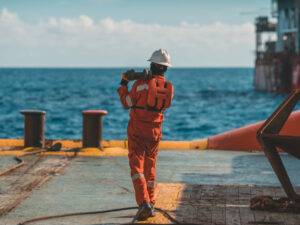Life on a vessel: an overview of the cabins
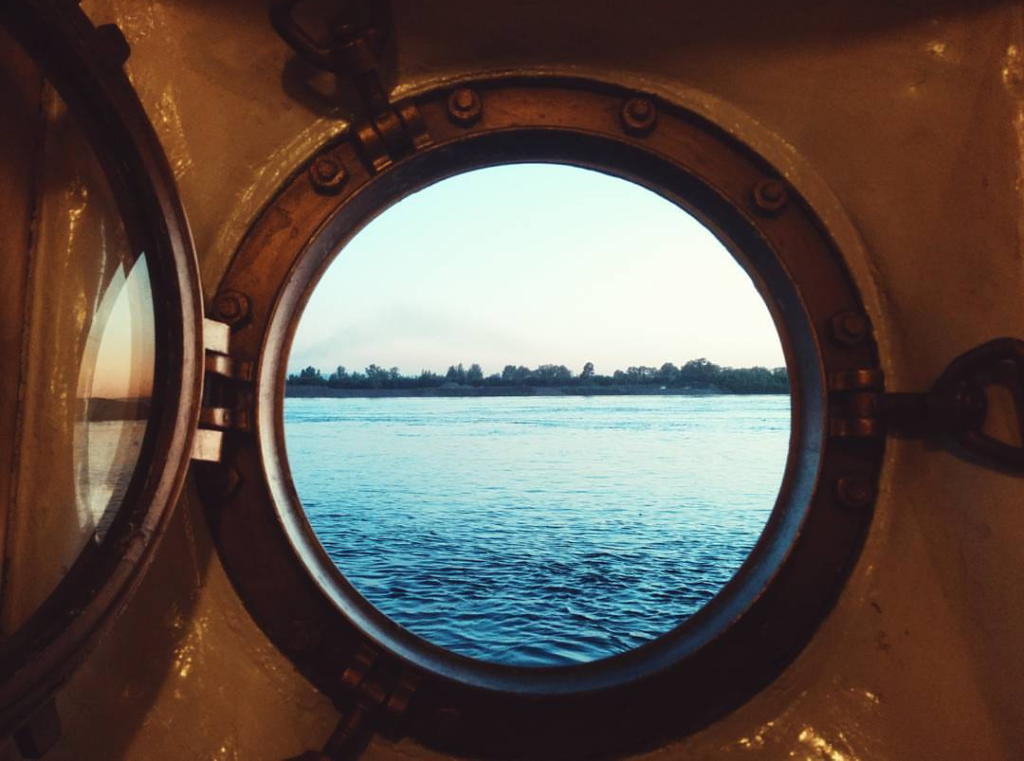

A seaman’s work and life at sea is limited by the size of the vessel. And the cabin is the place where you have to live for several months in a row. The psyche of the sailor and, in many respects, the success of the voyage itself depends on how the cabin is arranged. It is good if the vessel is designed to a high standard, with large living quarters, seating areas and comfortable living conditions. However, there are a lot of vessels with small cabins, shared toilets and showers, where there are no additional amenities, for example, saunas, gyms, etc. What kind of seafarers’ cabins should be by standards and how are the things with living quarters on vessels in reality – in a review from USM.
Standard lead-up
What a standard seaman’s cabin should be is described in detail by the Maritime Labor Convention, adopted in 2006. The main requirements for living quarters on a vessel are as follows:
- the ceiling height in the cabins must be at least 203 cm;
- all cabins must be provided with soundproofing;
- sleeping quarters may be located in the bow of the vessel, but never in front of the collision bulkhead. Cabins should not have direct communication with cargo holds, engine room or galley, storage rooms, drying rooms and public bathrooms. For this, partitions made of solid steel are installed. They also provide water and gas tightness;
- cabins must have adequate lighting and air conditioning;
- each sailor is provided with an individual sleeping quarters. Local authorities may grant exemptions, after consultation with the interested shipowners and seafarers organizations, for vessels of less than 3,000 TEU gross tonnage or special vessels;
- if for some reason the seaman on the vessel does not have his own cabin, then in any case each seaman is provided with a separate berth. The minimum internal dimensions of the berth must be at least 198 cm by 80 cm;
- the area of cabins on a vessel directly depends on the gross tonnage of the vessel. For example, for vessels with a capacity of up to 3 thousand TEU, the size of the cabin should reach 4.5 m2 For vessels from 3 to 10 thousand TEU – 5.5 m2. Cabins with an area of 7 m2 should be on a vessel of 10 thousand TEU.
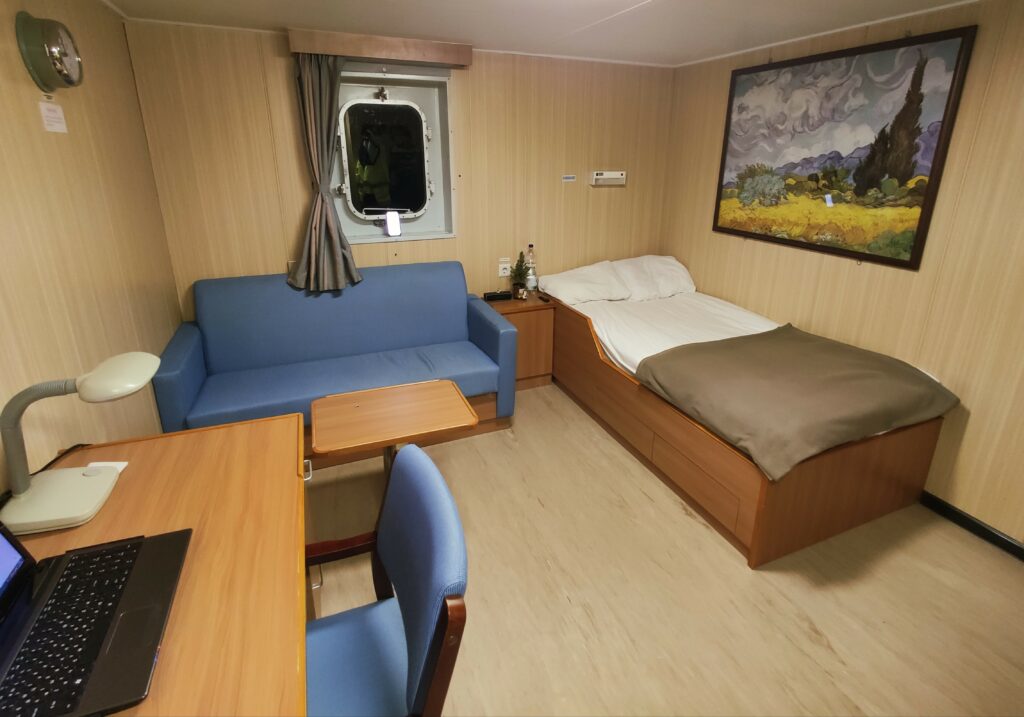
Also, according to the standards, up to four crew members can live in one cabin. But in this case, the requirements for the area of the quarters change. For example, a double cabin should be at least 7.5 m2, a triple cabin – 11.5 m2, and 14.5 m2 for cabins where 4 sailors will stay.
Read also: Seafarers` salaries: how much are Ukrainian specialists paid?
Cabins for sailors and officers: what’s the difference?
According to the standards, cabins for common sailors and officers on a vessel may differ. And not only in terms of area. Additional amenities may be provided in naval officers’ cabins. For the captain, chief engineer and chief navigator, in addition to the sleeping quarters, are also allocated an office and an additional lounge on the vessel. But there are also vessels that do not have such premises. In this case, the area of the cabin should increase to 8.5 m2, regardless of the gross tonnage of the vessel. Also, officers should have individual sanitary facilities with a bath or shower, depending on the size of the vessel.

The living quarters of the crew should be located on the shortest path to the service premises, passing in closed sheds, if possible. Doors from living quarters should go out into closed corridors, which, when entering the open deck, have two doors. The premises of the corridors bounded by these doors are called vestibules.
The captain’s cabin is located next to the wheelhouse, because he is obliged to directly control and monitor the course of the vessel. The captain’s cabin is one of the most comfortable cabins on the vessel.
If we talk about the quarters for ordinary crew members, then double cabins are often found. They usually have two-tier beds to save space. For the same reason, the berths (beds) in the cabin are placed quite high. This is done so that drawers (lockers) for things can be placed under them. All cabins on the vessel (both for the commanding staff and for the private) must necessarily have portholes for daylight to enter. Upstairs in the superstructures, daylight enters through rectangular windows.
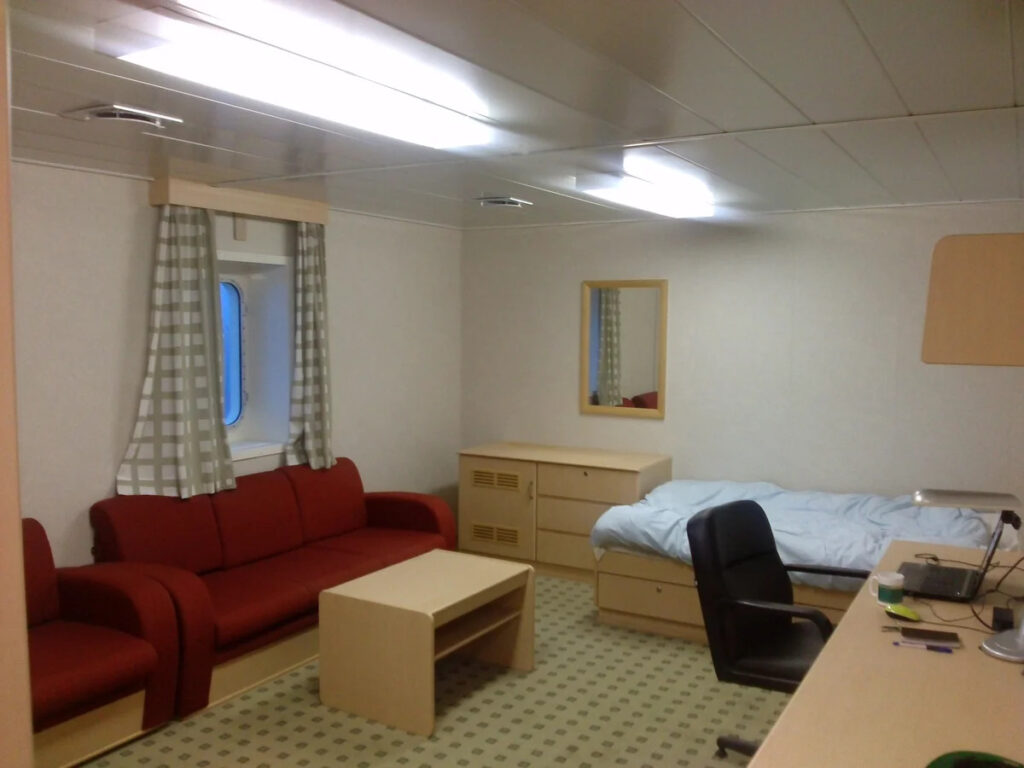
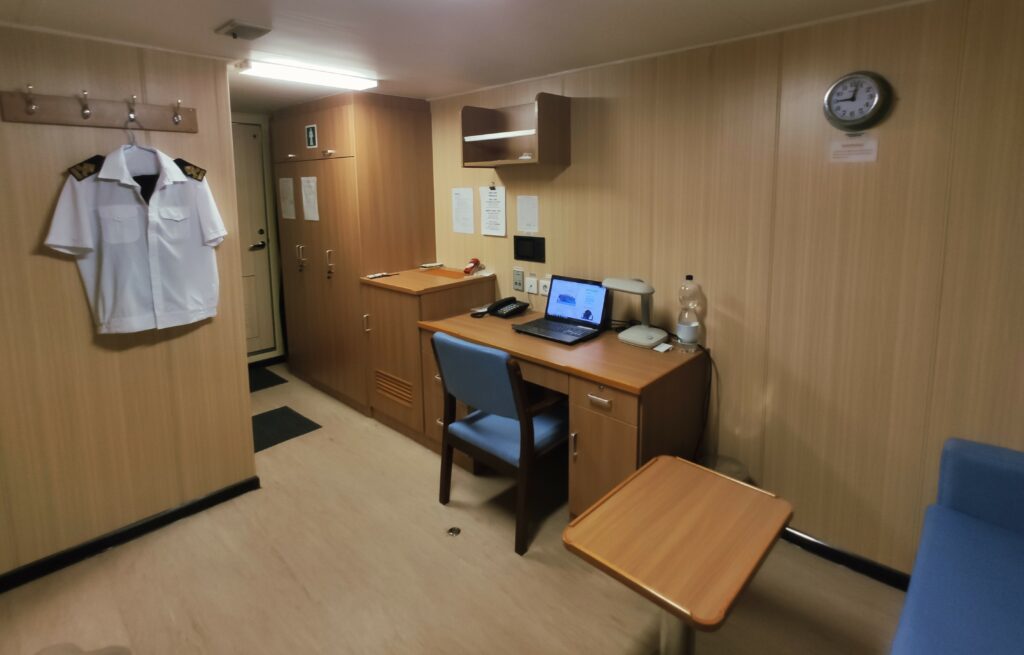
Cabins overview
On YouTube you can find many vlogs in which sailors talk about their life on board. Such video reviews are made by Vadim Polukhin, who since 2005 has been a captain on bulk carriers. He is a graduate of the Odesa Maritime Academy, and now lives in one of the EU countries. Specially for USM, he told how the captain’s cabin might look like in reality and whether it always met the accepted standards in his practice.
The main differences
Vadim Polukhin told us about the difference between the cabins of naval officers and ratings on vessels of the merchant fleet.
“The main differences are the space and the amenities in the cabin. The “guest zone” in cabins can be found most often only at the captains’ quarters. But on the vessel where I was during my last contract, such a guest area was also in the cabin of the chief engineer. The cabins also differ in the presence of a refrigerator for the officers,” said the source to USM.
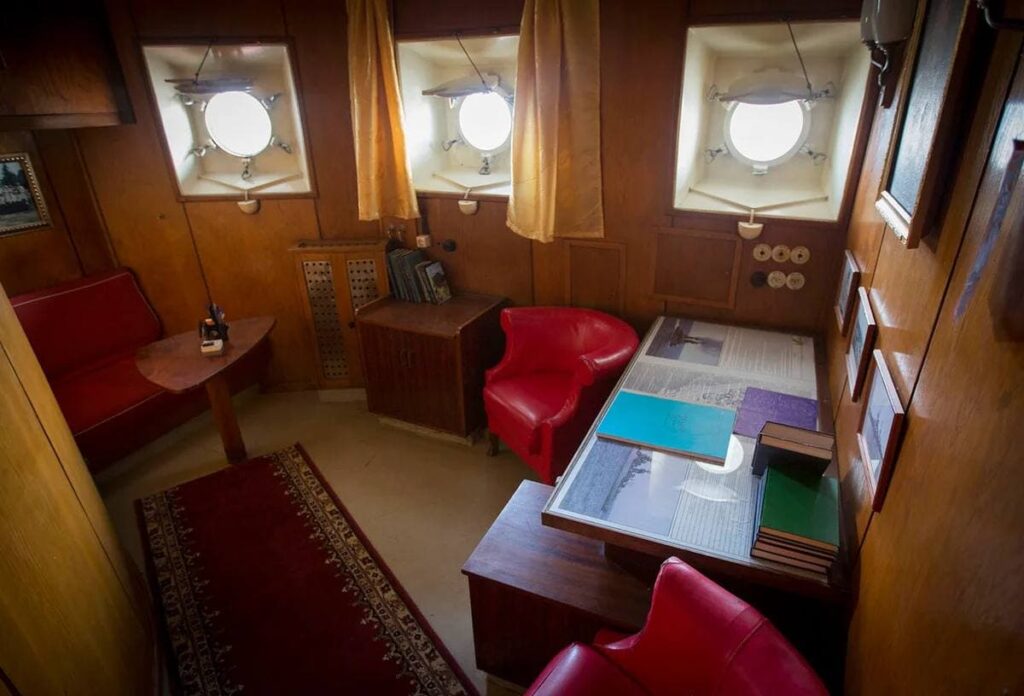
USM also asked Vadim Polukhin what were the best and worst living conditions that he had faced over the years of his work on the vessels of the merchant fleet.
“The best vessel that I have come across in terms of everyday life is Evdoxia. This bulk carrier can also be seen in the BBC / National Geographic film called The Biggest Metal Crusher. On Evdoxia I had a three-room cabin and a lounge with direct access to the cabin. There was even a pool on this bulk carrier. The worst conditions I have faced was when the entire vessel had a separate bathroom only in the captain’s cabin. The rest of the others shared latrines. According to the project of the vessel, even the chief engineer did not have his own bathroom. In addition, the cabins were very cold, and there was no question of sound insulation. But that was before 2006, now mandatory sound insulation is already included in the standards of the Convention.”
Vadim Polukhin made a video review of his cabin on the bulk carrier during his last voyage. In the video, you can see, for example, that all drawers and cabinets in the cabin are closed with special hooks.
“It is important that everything on the shelves and in the boxes is tightly packed so that things do not dangle during the swing. For this, all lockers are also closed with special hooks. Otherwise, during a storm, the door will dangle and it will simply be ripped out,” the author of the video commented.
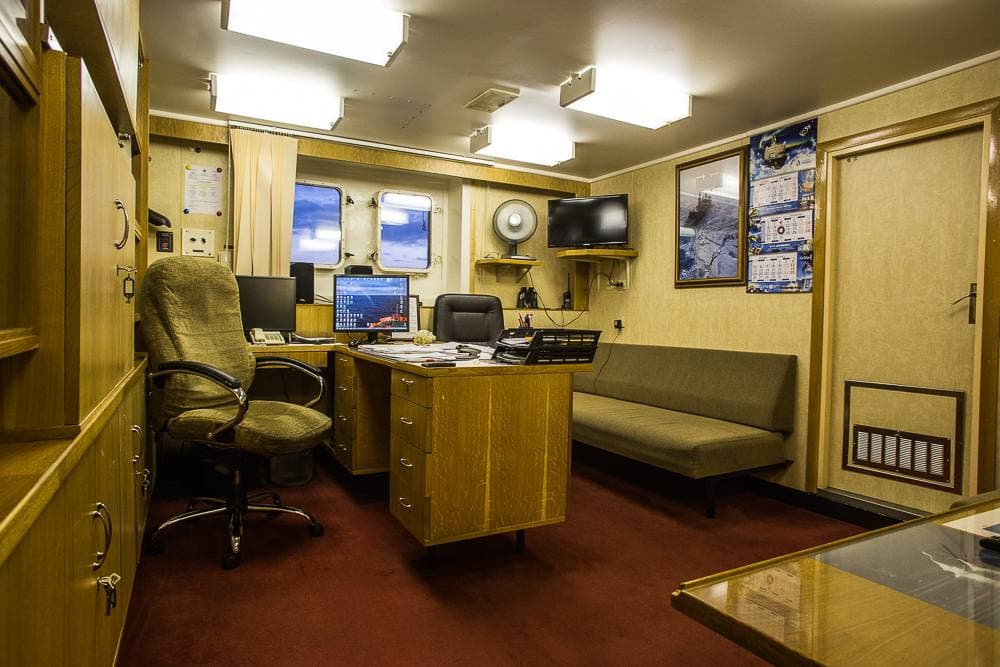
Another point of interest is the presence of an electric kettle in the cabin. “The coffee maker is located right at the entrance to the cabin. All cans on the table (for coffee or sugar) must be stable. The use of a kettle in the cabin is a topic of much debate. There have been cases of fires due to short circuits. But there are no direct prohibitions on its use in the cabin,” says Polukhin. The captain believes that there should be restrictions on the use of household electrical appliances on the vessel, but “moderation in everything.”
Sailor’s cabin
Now let’s see what conditions crew live in. For example, sailors. Ukrainian sailor Dmitry Avramenko also shoots video reviews and shows all the “delights” of life on board. For his blog, he also filmed an overview of the sailor’s cabin.
He showed that the cabin consists of only one room, but its size is quite enough for one person. The room is divided into zones: a work area with a desk and a sitting area with a bed and a small sofa. There is also a small heater in the cabin.
Most often, the illuminators in the cabins are tightly closed with Velcro curtains. This is done so that the sailor can sleep after the watch, and the daylight does not blind his eyes. Velcro is needed so that the curtains do not open by themselves during rolling.
“In the cabin in which I am now, the illumanator is covered with thick cardboard and a small hole is cut out so that the sailor can watch what is happening,” said Dmitry Avramenko.
Cabins on different vessels may differ from those described by sailors Vadim Polukhin and Dmitry Avramenko. It depends on the age of the vessel itself, as well as in what condition the previous occupant left the cabin. And even on how the shipowner treats seafarers and whether he cuts corners on living conditions.
If the cabin has a private bathroom, then most likely it will not be large. Only the most necessary – a toilet (sometimes with a bidet), a sink and a shower. There is always a mirror and a cabinet with a second mirror, where you can hide something from prying eyes, and all sorts of useful shelves. Sailors point out that putting various tubes on the shelves is not a good idea. Even with a slight rocking, they will surely fall.
And here is what happens in the cabin during a storm.
How is the bathroom in the cabin arranged?
The bathroom may also contain sockets for an electric shaver. The toilet is equipped with special handrails that a sailor can hold on to while rocking.
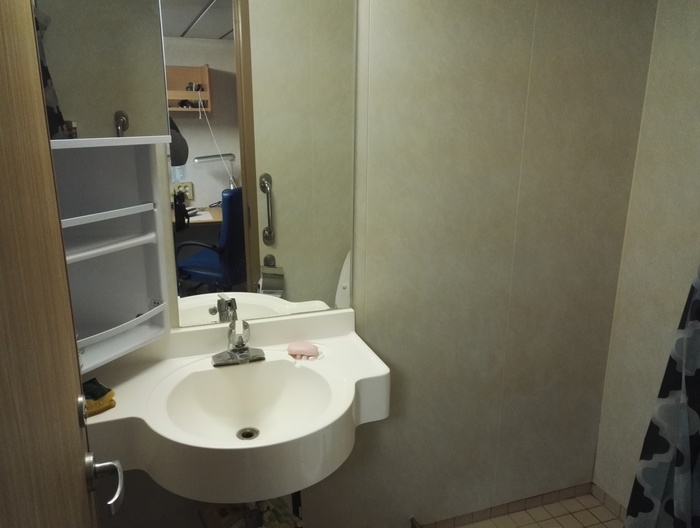
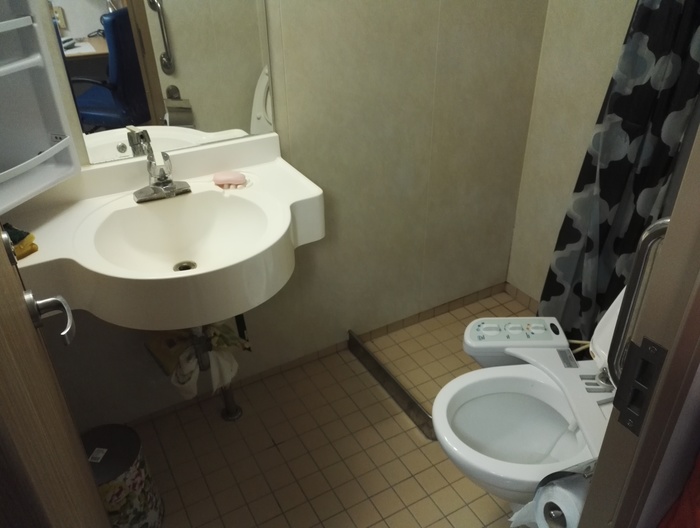
Ship owner’s cabin
Large vessels may also have the owner’s cabin. It is on the officer’s deck and is larger and more comfortable than even the captain’s. This cabin has a wider bed, more sockets and more chairs.
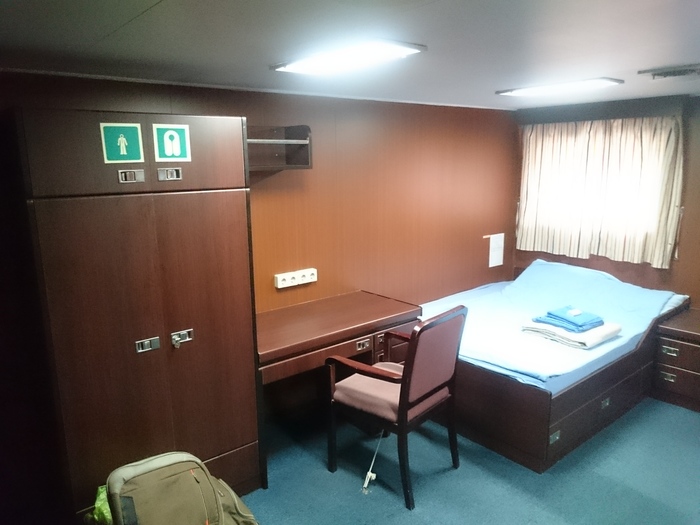
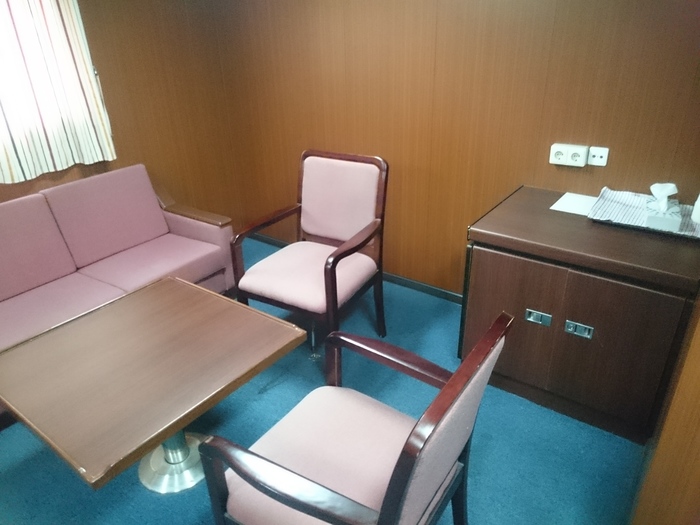
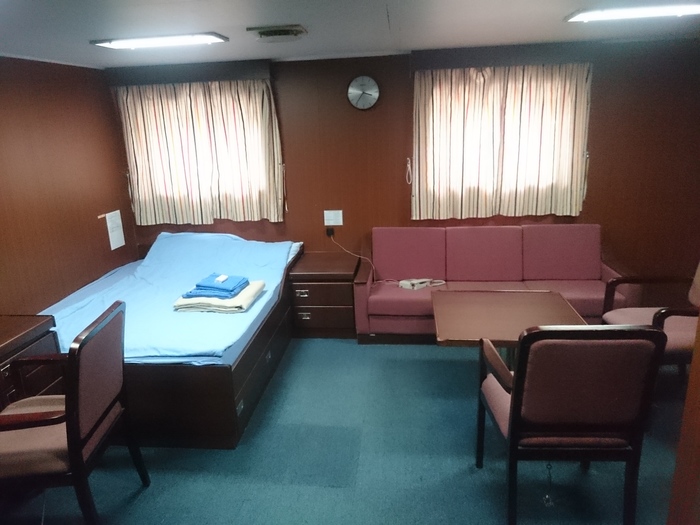
Common crew quarters
In addition to cabins, the crew of the vessel can rest in the common companion cabin or, as it is also called, in the rest room. It may contain a TV, board games or game consoles (not always).
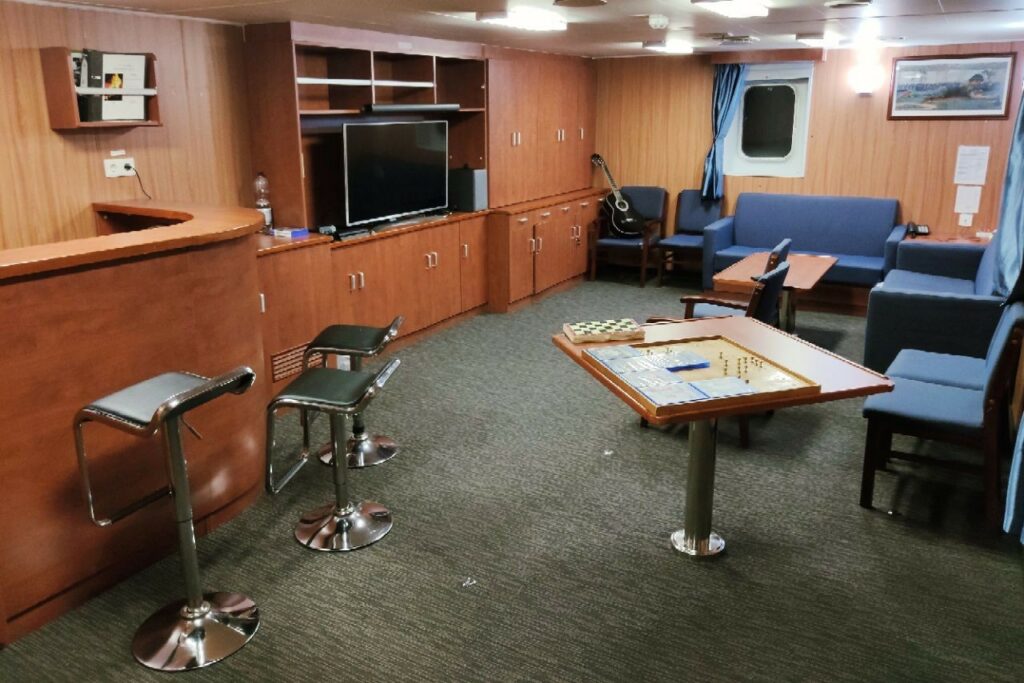
Also, some vessels are equipped with sports halls for the crew.
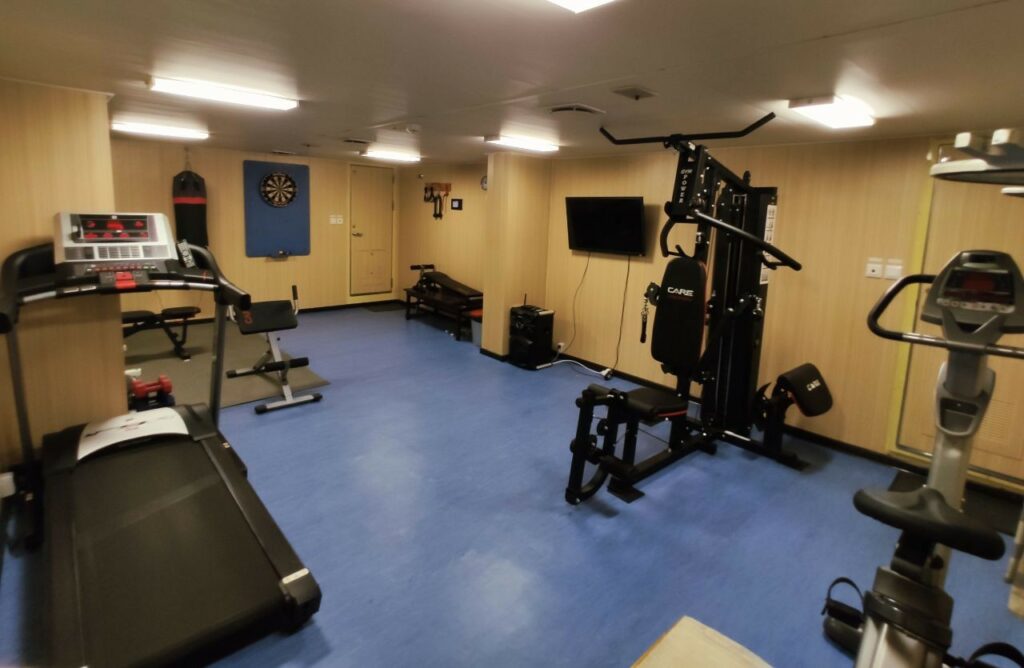
There is always a dining room on board. On a photo below you can see a separate round table – for the captain, first mate, chief engineer and second engineer.
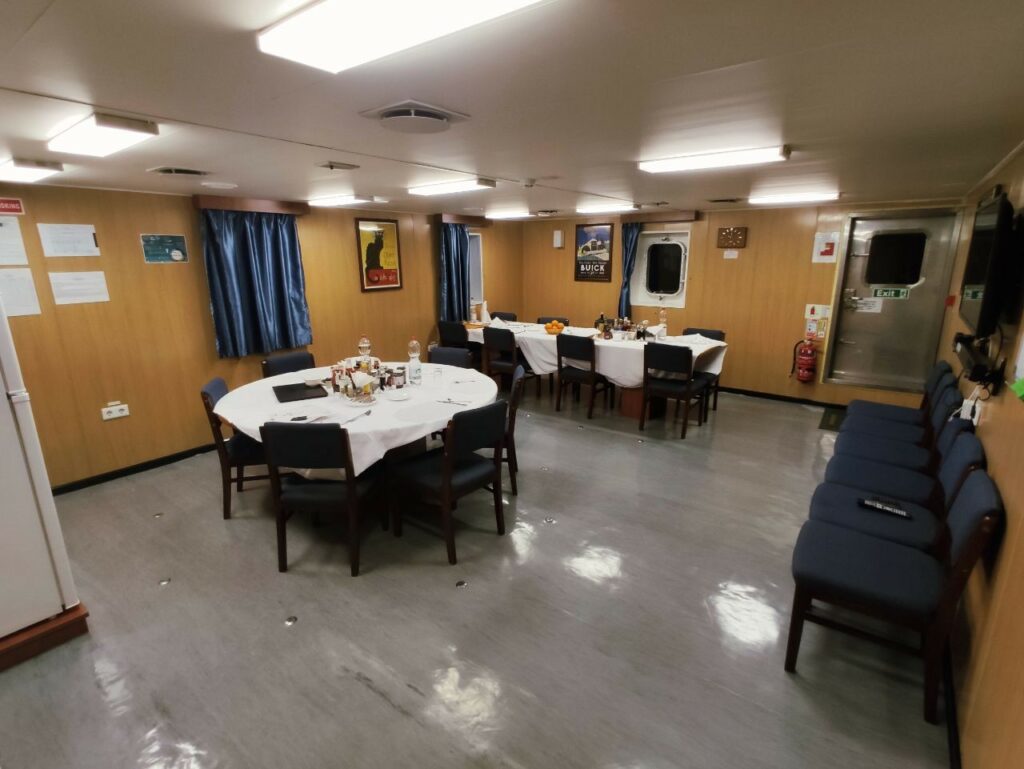
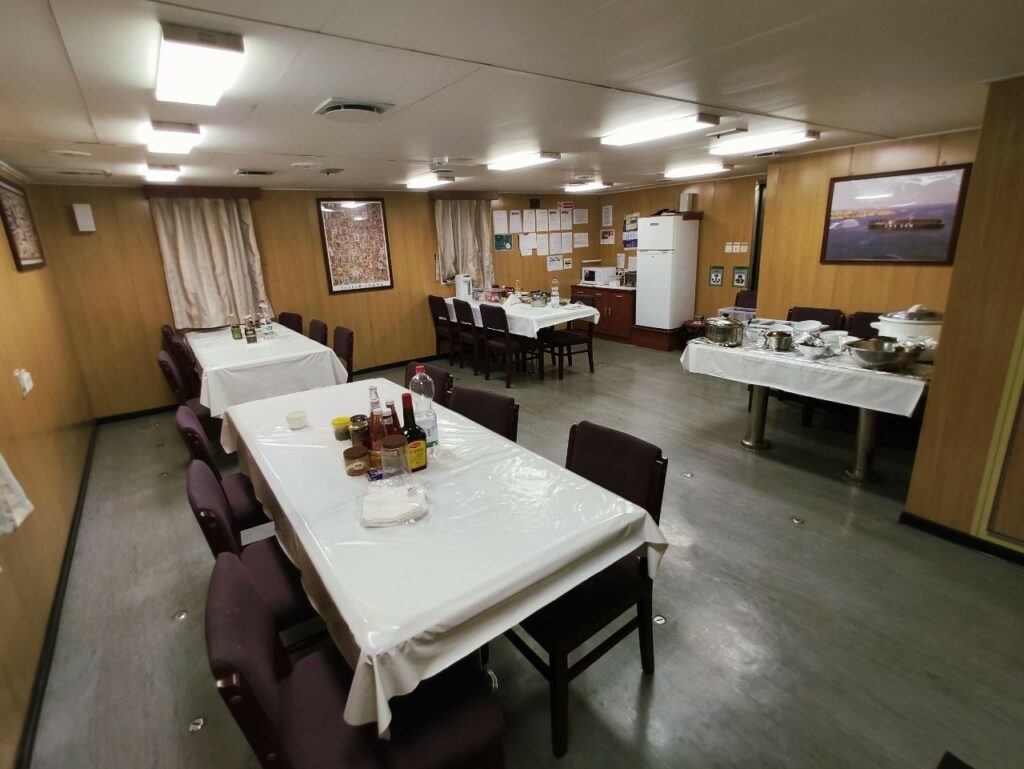
Important
Odesa charity foundation “Assol”, which helps sailors in crisis situations, gave its recommendations about the cabins. Fund specialists remind that the cabin is a private room. And the responsibility for it is personal.
“Never allow anyone (on vessel or outside) to enter your cabin without your consent or presence. The customs authorities of different countries have their own rules for the carriage of certain items in their countries. If an object is found that is prohibited in the country, the vessel may be detained or arrested, and you may end up in prison or be prosecuted,” the Assol Foundation notes. And they give an example from practice:
“Real Incident: A colleague kept three CDs of adult films in a sailor’s room without the latter’s consent. This was done to hide them from the customs of a particular country. When the customs boarded the vessel, they checked all the cabins and, in accordance with the rules, arrested both the owner of the discs and the sailor who had found the video footage.”
By the way
When the merchant fleet was still wind-driven, only the captain had a cabin. The rest of the crew lived in the bunk space. The bunk space was the name given to the lower deck where the crew slept. Nowadays, bunk spaces have virtually disappeared on vessels of the civilian fleet, but still exist on warships.
Photo
Seaman’s Dictionary
A berth – a hanging bed in the cabin on the vessel.
A locker – a box installed in the interior of the vessel, which is used to store the belongings of the crew , as a seat and as a place to rest or even sleep.
A bunk space – living quarters for the vessel’s crew. Previously, sailors were traditionally berthed in the bunk spaces, while the officers were kept in cabins.
An illuminator – a window in the cabin.
Authors: Evgeniya Tyagunova, Evgeniy Bely.



